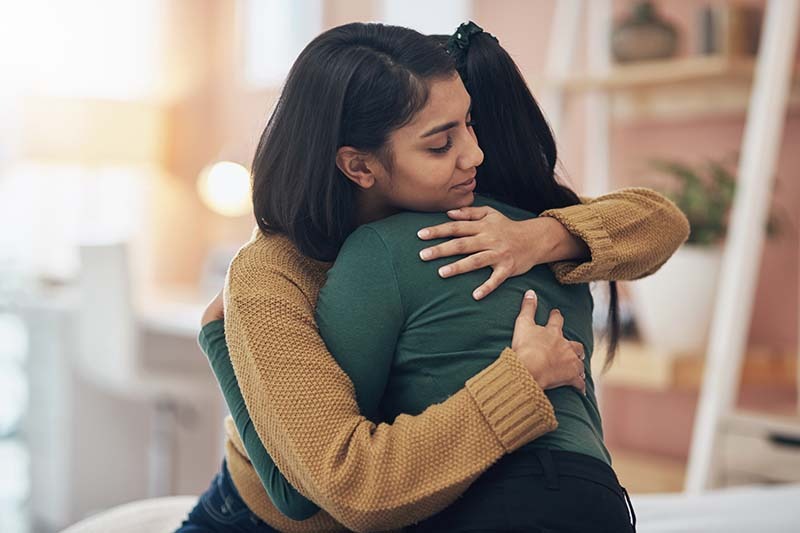The first week in February (2/1-2/7) is Gun Violence Survivors Awareness Week in the United States, a time during which the nation reflects upon the toll of gun violence. Since 2019, individuals and communities have gathered during this week to share stories about their experiences with gun violence, honor those whose lives were cut tragically short by firearms, and advocate for reform to reduce the prevalence of gun violence in the nation.
It is challenging to discuss the impact of gun violence with respect to the staggering statistics on the lives taken by firearms, but it is essential to reckon with the loss of individual lives, the futures cut short, and the grievous physical and emotional wounds left among those who survive.
The Centers for Disease Control and Prevention reported that in 2020 (the most recent year of data released), 45,222 people—an average of nearly 124 people per day—died from firearm-related injuries in the United States. Of these, more than half were individuals who died by suicide and over 40 percent were firearm homicides. These numbers are unfortunately increasing year over year. In fact, between 2011 and 2020, the rate of gun deaths increased 33 percent, with gun suicides increasing 12 percent and firearm homicides increasing 70 percent. In 2020, firearms also became the leading cause of death among children and adolescents (ages 1 to 19), surpassing car accidents, and were among the top five leading causes of death for people up to 44 years old.
The impacts of gun violence, however, are much broader than the injuries we can see, and the statistics and stories shared, particularly through mainstream media, often fail to account for those we can’t see.
In addition, there are an estimated 115,000 nonfatal firearm injuries in the US each year. This translates to more than 315 people per day, on average, who sustain gunshot-related injuries. Nonfatal injuries also ranged from being related to assault, self-harm, or accidental injury, with impacts stretching from minor injuries to highly severe ones, requiring major operations and even lifelong care. Like fatal firearm injuries, nonfatal cases have also continued to increase over time.
The impacts of gun violence, however, are much broader than the injuries we can see, and the statistics and stories shared, particularly through mainstream media, often fail to account for those we can’t see.
Exposure to gun violence can lead to numerous adverse impacts. Research has found, for example, that exposure to firearm fatalities, including living in communities where such violence occurs, results in significantly higher levels of psychological distress, depression, and suicidal ideation compared to individuals who do not witness gun deaths. It can also affect fear and individuals’ sense of safety, even leading to physical and social isolation. Exposure to mass shootings in particular has been found to lead to high rates of post-traumatic stress symptoms and post-traumatic stress disorder, major depression, and generalized anxiety disorder.
Physical health issues are also associated with exposure to gun violence. Daniel Semenza and Richard Stansfield, members of the Regional Gun Violence Research Consortium, found that higher rates of nonfatal gun violence in communities was correlated with obesity, lack of sleep, physical inactivity, and smoking. Others, including Consortium member David Hemenway, have highlighted the relationship between exposure to gun violence and health issues, including sleep problems, heart disease, asthma, and high-risk sexual behavior.
Additionally, gun violence affects people differently. As Consortium members Amanda Nickerson and Sonali Rajan note, children who are exposed to gun violence may experience not only post-traumatic stress, anxiety, and depression, but also may externalize these impacts through aggression, violent behavior, poor academic performance, and delinquency issues. These burdens of gun violence fall disproportionately on children of color, specifically young Black males (ages 15 to 24) living in urban settings.
Black women and girls also bear a disproportionate share of the burden of gun violence. As Brooklyn Hitchens, a contributor to the Consortium, highlights, urban Black women and girls are significantly more likely to be survivors of homicide and be exposed to community gun violence than their white counterparts. They face the added burdens of caring for those left behind, settling debts, and making funeral arrangements for those they lose.
For every one person killed by gun violence, between three and 10 others, referred to as survivors or co-victims, are impacted.
The impact of firearm violence takes many forms. It may be direct, such as being threatened, injured, or killed. It also may be indirect, such as losing family members, friends, or peers, as well as hearing or witnessing gun violence. For every one person killed by gun violence, between three and 10 others, referred to as survivors or co-victims, are impacted.
All told, more than half of Americans are affected by gun violence in some way, shape, or form. This number still may be underestimating the full impact of this issue as it would be difficult to fully account for the various mental health outcomes associated with gun violence. As gun violence survivors share their stories this week, we should also honor their experiences by continuing to work to reduce gun violence in the US through policies and practices as well as additional research.
ABOUT THE AUTHOR
Jaclyn Schildkraut is executive director of the Regional Gun Violence Research Consortium at the Rockefeller Institute of Government

